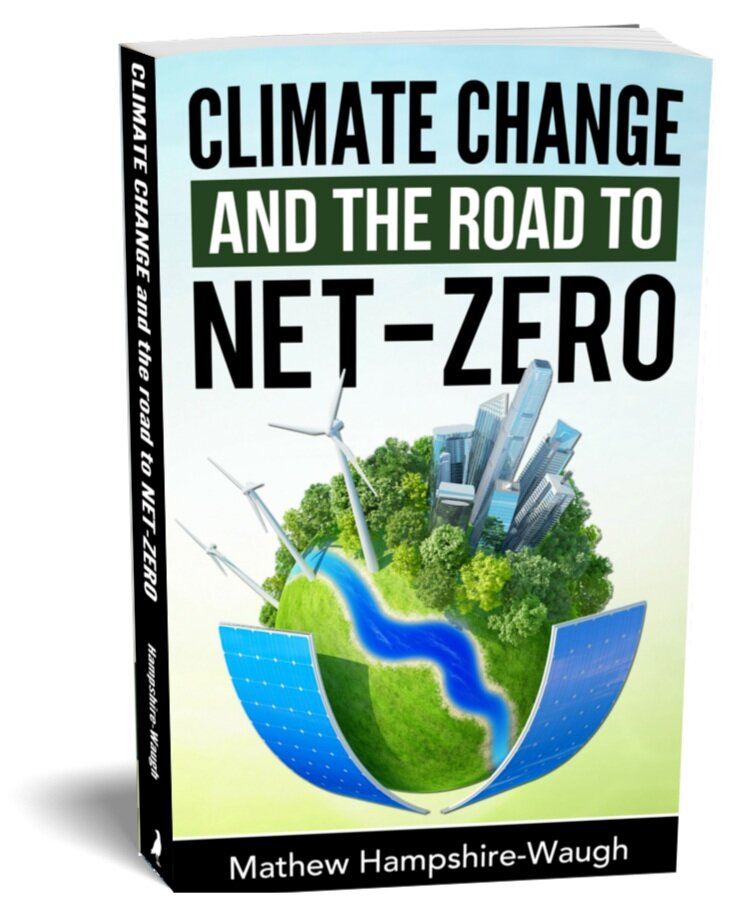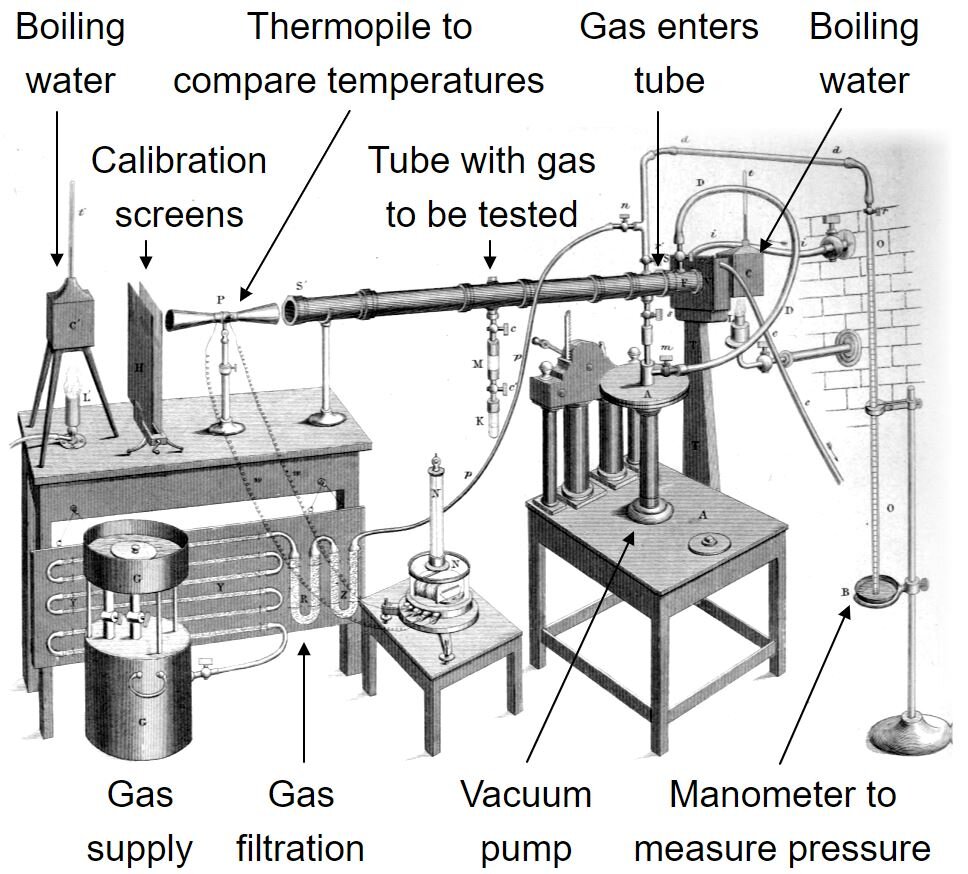Net-Zero and the role of Energy Storage
In this post from NET-ZERO:
What solutions do we have to address the variability of Wind and Solar Electricity Generation? From heat, gravity, and chemistry to demand response and interconnected networks - the solutions available for the energy storage challenge.
What technologies can be used to store energy in the future? Pumped Hydro, Batteries, Compressed Air, Gravity, Hydrogen, and e-Fuels: the technology ready for energy storage.
How much energy storage is required if Wind and Solar provide most of our future energy needs? From short-term energy storage to seasonal energy storage - how do we balance supply and demand in a Net-Zero future.
The Electrical Grid of Today
Electrical power grids are designed to cater for the fluctuation in demand through the day by increasing and decreasing supply when necessary.
Peak electricity consumption tends to be in the afternoon and early evening when people are returning from work or school, whereas consumption declines by one third overnight before ramping back up in the morning.
Today, grid generation is made up of base load, load following, peaking, and grid reserve power sources.
Base load is typically large nuclear or coal fired power stations which are cheap but only cost effective when running near full capacity and typically cover the minimum power overnight.
Load following are mid-sized coal or gas plants designed to track the extra demand through the day and adjust the power output accordingly.
Peaking power generation may only switch on for a few hours in the late afternoon and is typically comprised of hydroelectric, small cheap gas turbines, or diesel generators which can turn on and off very quickly and act as back-up.
Grid reserve is the excess capacity to ensure a consistent supply.
Perfectly orchestrating the output of these different power sources into the grid means power operators can match generation with use. In today’s electricity system, the energy is stored in the fuel, ready to be turned to electricity at the flick of a switch.
The Renewables-Based Grid of the Future
Now, let’s imagine a future energy supply made up of half Solar PV and half wind, with enough capacity to cover all the world’s energy needs.
Solar PV and wind are highly complementary technologies because the sun shines in the day and the wind tends to blow turbines harder at night when undisturbed by turbulence from the sun’s heat. High-pressure weather systems tend to be sunny with little wind and low-pressure systems windy, with more cloud. Summer gets more sun and winter more wind. When one technology is generating less, the other is usually working harder, but the results are not perfect.
Solar power follows a bell-shaped curve which peaks midday and drops to zero output at night. So, the majority of solar energy is delivered through the middle of the day. This means that even on a perfectly average sunny and windy day there is still a mismatch of energy supply and energy demand. If you overlay the two profiles, the mismatches add up to around 25% of generation which must be stored in the middle of the day and “time-shifted” for use overnight.
Now imagine a day when the wind doesn’t blow, and the sky is cloudy. Not only does the demand pattern not match the supply pattern, but the total generation is much lower than required, creating a 75% shortfall.
In other words, to cover the day-night mismatch or to cover a dark, still day, we need 75% of daily demand ready and waiting. Now this is an overly simplistic way to think about storage because we are assuming all the world’s generation is in one location. Solar and wind can be interconnected between different regions and countries which lowers the chance of completely still and dark periods. On the other hand, still and dark periods may last longer than one day in any region. But it provides a good back-of-the-envelope estimate:
Overall, as much as half of renewable generation may require daily storage, which could mean up to 140 billion kWh (TWh) of storage capacity (0.14% of future annual energy use) that can be cycled ~365 times per year to store a total of 50 trillion kWh of energy (half of all final energy use in the future).
What Do the Energy Experts Think?
Researchers use decades of historic weather data in specific locations to get a more precise storage requirement by calculating how much electricity a fully renewable grid would have produced at any given time. They use computer models to optimise the grid by stitching together different generating areas and interconnecting supply and storage resources until supply and demand is suitably matched over time.
The typical standard is no more than 1 days’ worth of outages over a ten-year period. There is still no consensus on whether 100% renewables are optimal, but most studies conclude that a high penetration of renewables is certainly possible and a good solution.
A review of studies by Zerrahn et al in 2018 showed that most models predict short term storage capacity requirements between 0.01% and 0.14% of annual energy demand once renewables make up more than two thirds of electricity. Our back-of-the-envelope estimate (0.14%) is at the high end of this range and can serve as a conservative assumption.
What About Balancing Summer with Winter?
So far we have thought about short term or daily storage requirements to solve intermittency of generation, but seasonal variability is another issue.
Our wind farms will generate double the output in winter compared to summer. Our Solar PV farms will deliver triple the output in summer compared to winter.
Wind and solar can counter-balance one another through the seasons, but maybe not perfectly. In many regions there will likely be a mismatch between supply and demand through the year.
In our 50:50 wind:solar example, the total seasonal mismatch adds up to about 4% of total annual energy demand or 4,000 billion kWh (TWh). This seasonal energy imbalance must be stored in summer and reused in winter.
Energy Storage - What Options do We Have?
There is currently ~10 billion kWh of short-term electrical storage capacity globally. More than 90% is pumped hydro. This equals 17% of global daily electricity demand or 4% of daily energy demand. This capacity needs to increase up to ten-fold if electricity becomes the dominant energy supply and renewables become the dominant energy source. So, let’s review our storage options:
Flywheels are heavy spinning wheels that store kinetic energy. Incoming electricity powers a motor, which spins a heavy steel disc, when the energy is required again the spinning wheel is used to turn a generator.
Capacitors use two metal plates with insulating material sandwiched between. They store energy as positive and negative charge on each side of the insulator. Super capacitors use liquid electrolytes to increase the storage capacity.
Lead Acid Batteries are a mature technology which uses the reversible reaction between sulphuric acid and two lead plates (electrodes) to charge and discharge the battery. Lead Acid is one of the most widespread types of battery technology, commonly used to power the starter motor in cars.
Lithium-Ion Batteries work by using electricity to shuttle positively charged lithium ions through a liquid electrolyte from a metal-based cathode to carbon-based anode. When the stored energy is required again, a circuit is connected and the lithium ions flow back, producing electricity.
Vanadium Flow Batteries use two tanks of dissolved vanadium metal separated by a proton exchange membrane. The liquid vanadium solution is pumped around the tanks and past the membrane. When charging, the voltage forces positive charges to move from one tank to another. When the energy is required again the chemical reaction is reversed and drives an electrical current.
Sodium Sulphur Batteries operates at over 300⁰C and use the reaction between molten sodium and sulphur to charge and discharge the battery. Sodium sulphur batteries require a constant supply of energy to maintain their temperature.
Demand Side Response is not strictly a storage technology but a demand management function. It is already widely employed today. Large industrial users of electricity have contracts to reduce power consumption at peak electrical demand on the grid. They can turn off non-essential refrigeration, mechanical, or heating processes for a certain duration and get paid to help balance the grid. With the roll out of the Internet of Things, integration of both industrial and electrical appliances will become more widespread. Demand side response can become fully automated, run by your smart meter, router, and household appliances such as heaters, aircon, fridges, and electric cars to help balance the grid acting like a virtual battery.
Gravity Energy Storage involves moving weight from a low level to a higher-level using electricity and letting the weight fall back down to recoup the energy through a generator. One example comes from a company called Energy Vault who are developing a 33-storey tower with six crane arms that stacks and unstacks 35 tonnes of reclaimed concrete blocks to charge and discharge the “gravity battery”.
Compressed Air Energy Storage uses electricity to power a compressor which pressurises air into a closed storage space such as a salt cavern or depleted gas reservoir. When the energy is required again, the air is allowed to flow back through a gas turbine to produce electricity.
Pumped Hydro works by pumping water from lower levels to an upper reservoir using electricity. The energy is stored as gravitational potential. When power is needed again the water flows back through a turbine to generate electrical power
Thermal Energy Storage uses excess energy to generate heat and store it in underground tanks, pits, aquifers, or boreholes until required. This can be done at lower temperatures using water or higher temperatures using phase change materials such as molten salt. Possible thermochemical routes such as the reversible reaction of potassium oxide will store and release heat at 99% efficiency but are more expensive.
Electrolysis of Water to Hydrogen or so-called green hydrogen is a process whereby water (H2O) is split into hydrogen (H2 ) and oxygen gas (O2 ) using electricity. There are three main technologies for electrolysis: Alkaline, Polymer Electrolyte Membrane (PEM), and Solid Oxide, each with its pros and cons. The hydrogen gas can be compressed and stored in salt caverns or depleted gas reservoirs for use later. Hydrogen can be reused in a variety of ways:
Hydrogen could be fed into the natural gas network and piped straight into residential and commercial boilers, fireplaces, cookers, and industrial heating equipment. According to NREL studies so far show that no major issues arise with hydrogen concentrations of up to 5-15% in natural gas. At higher concentrations all-natural gas pipes must be converted to plastic and all equipment must be retrofitted to burn hydrogen.
Hydrogen could be converted to Synthetic Natural Gas (or other e-Fuels) which can be used in the existing gas networks and appliances. This is done by combining the hydrogen with carbon dioxide to produce methane (natural gas) and water. The chemical route involves the Sabatier reaction which uses heat, pressure, and a nickel catalyst or a biological methanation route using microorganisms called Archaea.
Hydrogen could be converted to electricity using fuels cells bringing the hydrogen cycle full circle by combining hydrogen with oxygen to generate electricity and water. Alternatively, hydrogen can be fed through modified gas turbines to generate electricity.
So, we have many energy storage options at our disposal, but to understand which will work for different applications and at what cost, we must understand the fundamentals of each technology including efficiency, energy leakage, life, resource limitations, and economics…. but that’s for another blog!
































